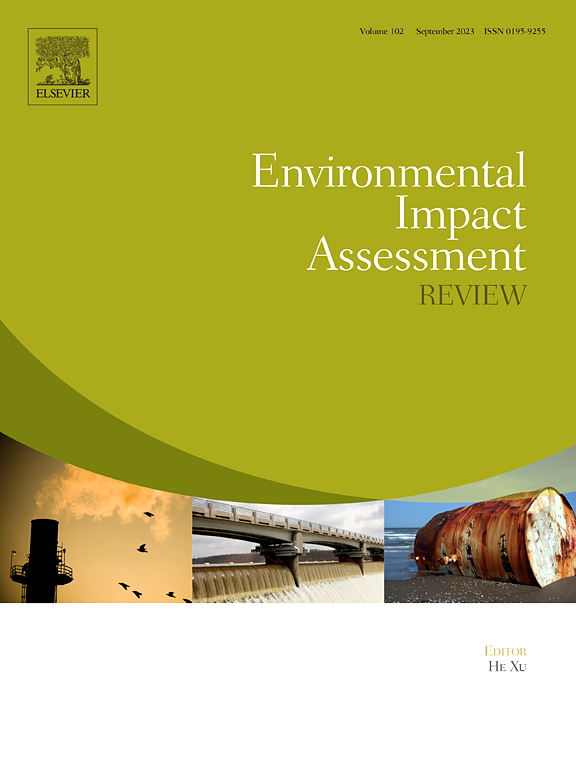Dynamic assessment of life cycle carbon emissions and economic benefits of surfactant foam warm recycled asphalt pavement
IF 11.2
1区 社会学
Q1 ENVIRONMENTAL STUDIES
引用次数: 0
Abstract
The application of surfactant foam warm recycled asphalt pavement (SFWRAP) is a promising trend in sustainable road construction, but its environmental impacts and economic benefits remain unclear. This paper developed a comprehensive framework integrating Dynamic Life Cycle Assessment and Life Cycle Cost Analysis, and established an uncertainty evaluation model. This framework was used to analyze the environmental impacts and economic benefits of SFWRAP. The results demonstrated that in both static and dynamic models, SFWRAP emitted 922.34 t-CO2-eq and 912.39 t-CO2-eq less than hot recycled asphalt pavement. Furthermore, the carbon emissions of the dynamic model were lower than those of the static model, underscoring the significance of considering the time effect. Additionally, the economic benefits of SFWRAP were significantly greater than those of conventional hot mix asphalt pavement and hot recycled asphalt pavement, with total costs reduced by 24.01 % and 4.88 %, respectively. The maximum deviation between the simulated mean and the actual calculated value was only 0.8225 %, further confirming the high reliability of the carbon emissions calculation.
表面活性剂泡沫温再生沥青路面全生命周期碳排放及经济效益动态评价
表面活性剂泡沫温再生沥青路面(SFWRAP)的应用是可持续道路建设的发展趋势,但其环境影响和经济效益尚不清楚。建立了动态生命周期评价与生命周期成本分析相结合的综合框架,建立了不确定性评价模型。该框架用于分析SFWRAP的环境影响和经济效益。结果表明:在静态和动态模型下,SFWRAP均比热再生沥青路面少排放922.34 t-CO2-eq和912.39 t-CO2-eq;此外,动态模型的碳排放量低于静态模型,强调了考虑时间效应的重要性。此外,SFWRAP的经济效益显著高于传统热混合沥青路面和热再生沥青路面,总成本分别降低24.01%和4.88%。模拟均值与实际计算值的最大偏差仅为0.8225%,进一步证实了碳排放计算的高可靠性。
本文章由计算机程序翻译,如有差异,请以英文原文为准。
求助全文
约1分钟内获得全文
求助全文
来源期刊

Environmental Impact Assessment Review
ENVIRONMENTAL STUDIES-
CiteScore
12.60
自引率
10.10%
发文量
200
审稿时长
33 days
期刊介绍:
Environmental Impact Assessment Review is an interdisciplinary journal that serves a global audience of practitioners, policymakers, and academics involved in assessing the environmental impact of policies, projects, processes, and products. The journal focuses on innovative theory and practice in environmental impact assessment (EIA). Papers are expected to present innovative ideas, be topical, and coherent. The journal emphasizes concepts, methods, techniques, approaches, and systems related to EIA theory and practice.
 求助内容:
求助内容: 应助结果提醒方式:
应助结果提醒方式:


